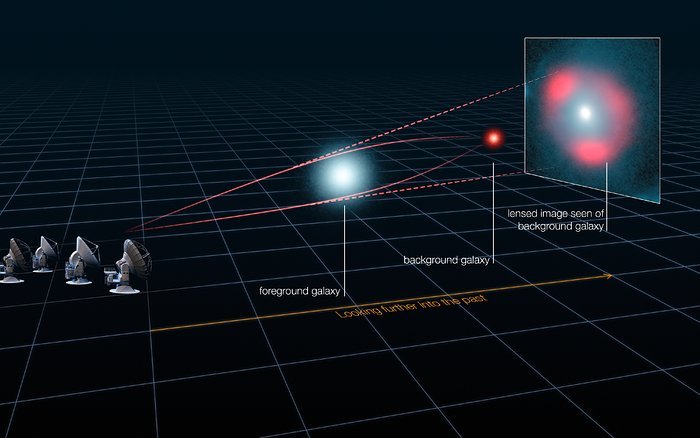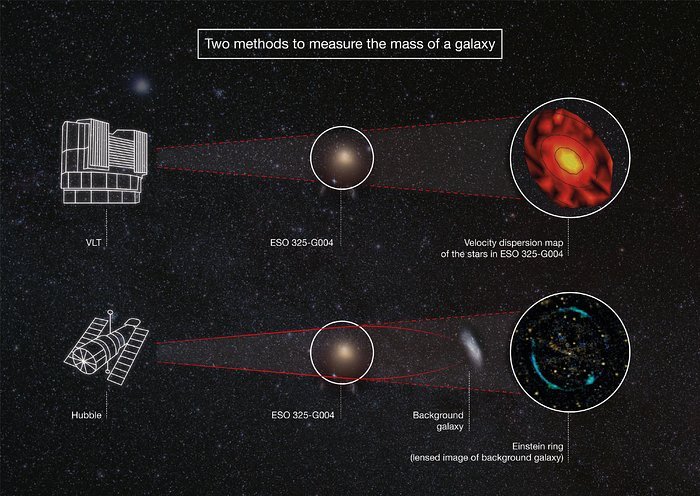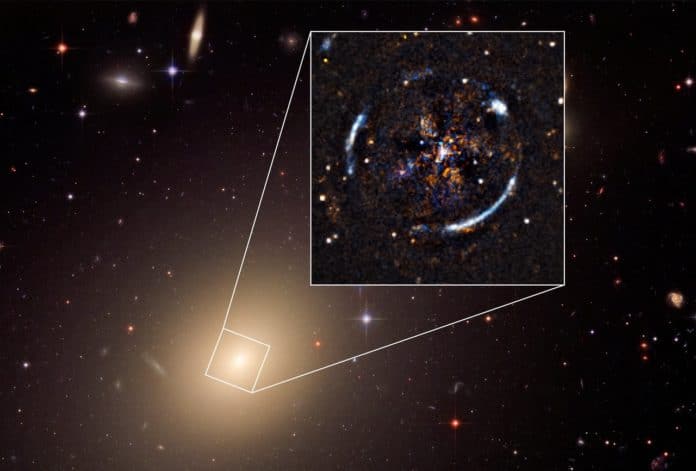Astronomers utilizing the MUSE instrument on ESO‘s Very Large Telescope in Chile, and the NASA/ESA Hubble Space Telescope, have made the most exact test yet of Einstein’s general theory of relativity outside the Milky Way. The closer system ESO 325-G004 goes about as a solid gravitational focal point, mutilating light from a removed universe behind it to make an Einstein ring around its inside.
By looking at the mass of ESO 325-G004 with the curvature of space around it, the cosmologists found that gravity on these galactic length-scales carries on as anticipated by general relativity. These principles out some elective speculations of gravity.
Using the MUSE instrument on ESO’s VLT, scientists calculated the mass of ESO 325-G004 by measuring the movement of stars within this nearby elliptical galaxy. They also measured how fast the stars were moving in ESO 325-G004.

Utilizing the NASA/ESA Hubble Space Telescope, they watched an Einstein ring coming about because of light from a distant galaxy being misshaped by the mediating ESO 325-G004. Watching the ring enabled the cosmologists to gauge how light, and subsequently spacetime, is being distorted by the huge mass of ESO 325-G004.
Einstein’s general theory of relativity predicts that objects disfigure spacetime around them, causing any light that goes by to be redirected. This results in a wonder known as gravitational lensing. This impact is detectable for extremely massive objects. A couple of hundred in number gravitational lenses are known, yet most are too distant, making it impossible to definitely gauge their mass. In any case, the galaxy ESO 325-G004 is one of the nearest lenses, at only 450 million light-years from Earth.

Thomas Collett from the University of Portsmouth said, “We know the mass of the foreground galaxy from MUSE and we measured the amount of gravitational lensing we see from Hubble. We then compared these two ways to measure the strength of gravity — and the result was just what general relativity predicts, with an uncertainty of only 9 percent. This is the most precise test of general relativity outside the Milky Way to date. And this using just one galaxy!”
General relativity has been tested with exquisite precision on Solar System scales, and the movements of stars around the black hole at the center of the Milky Way are under detailed examination. Testing the long-range properties of gravity is fundamental to approve our current cosmological model.
These discoveries may have critical implications for models of gravity other option to general relativity. These elective speculations anticipate that the impacts of gravity on the curvature of spacetime are “scale dependent”. This implies gravity ought to carry on distinctively crosswise over cosmic length-scales from the way it carries on the littler sizes of the Solar System.
Scientists observed that this is unlikely to be true unless these differences only occur on length scales larger than 6000 light-years.
Bob Nichol, from the University of Portsmouth said, “The Universe is an amazing place providing such lenses which we can use as our laboratories. It is so satisfying to use the best telescopes in the world to challenge Einstein, only to find out how right he was.”
The study published online can be read here.
